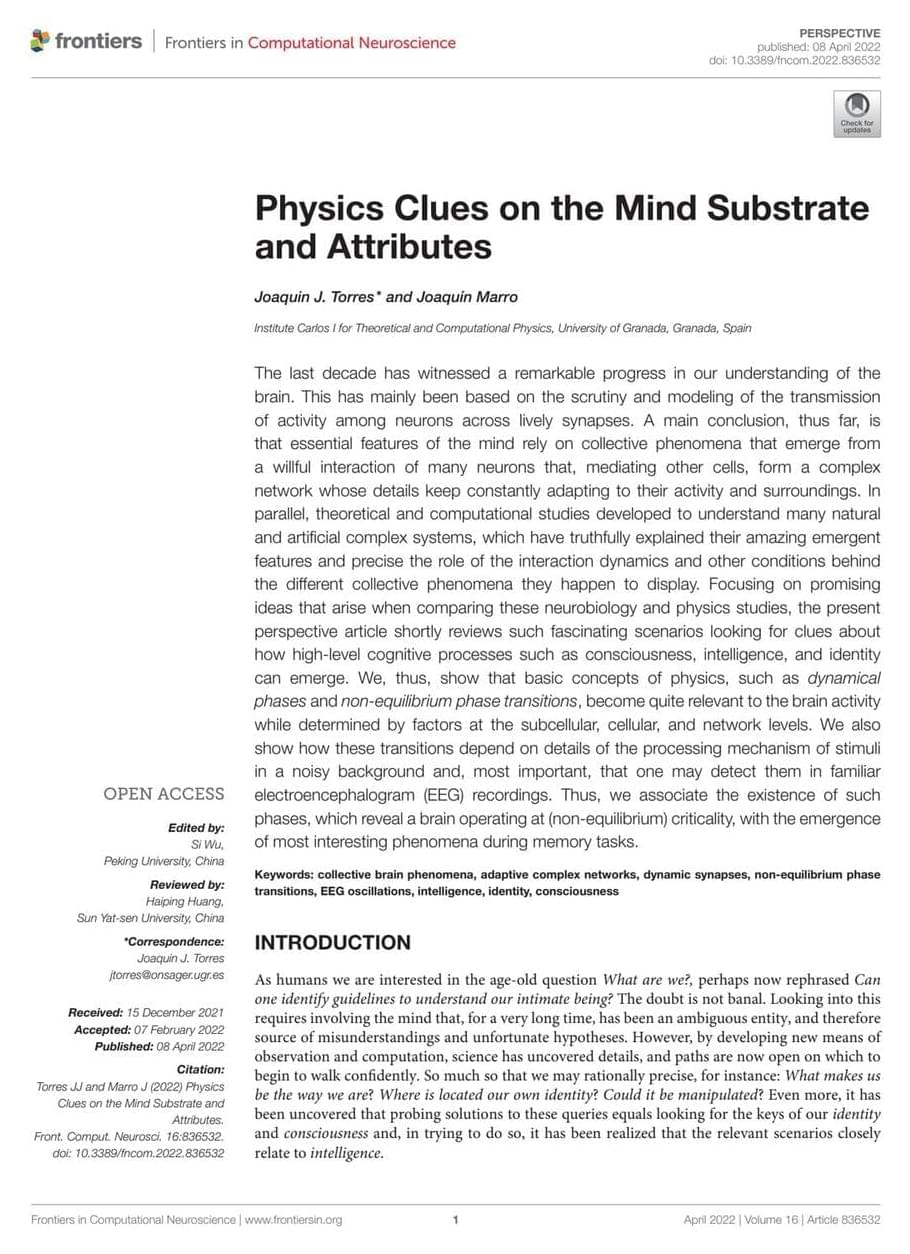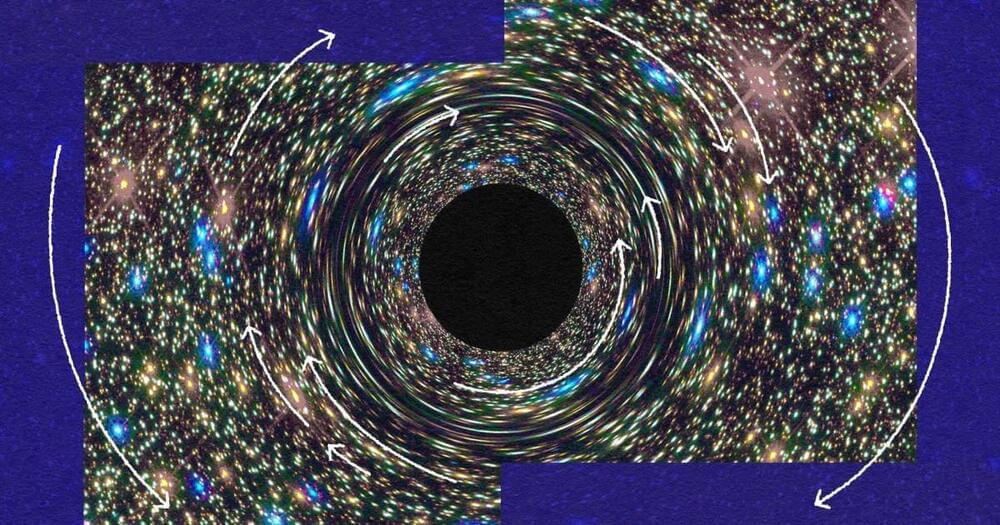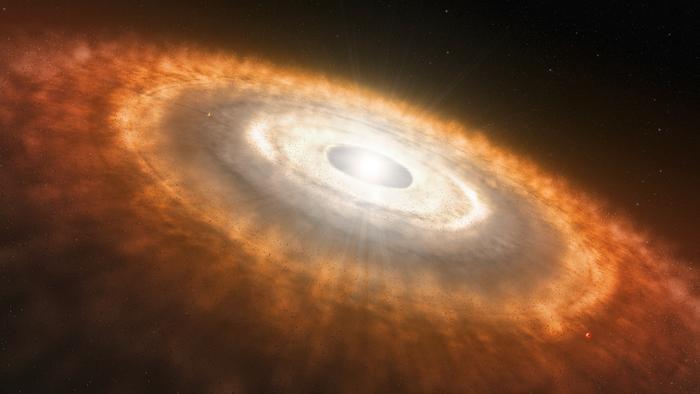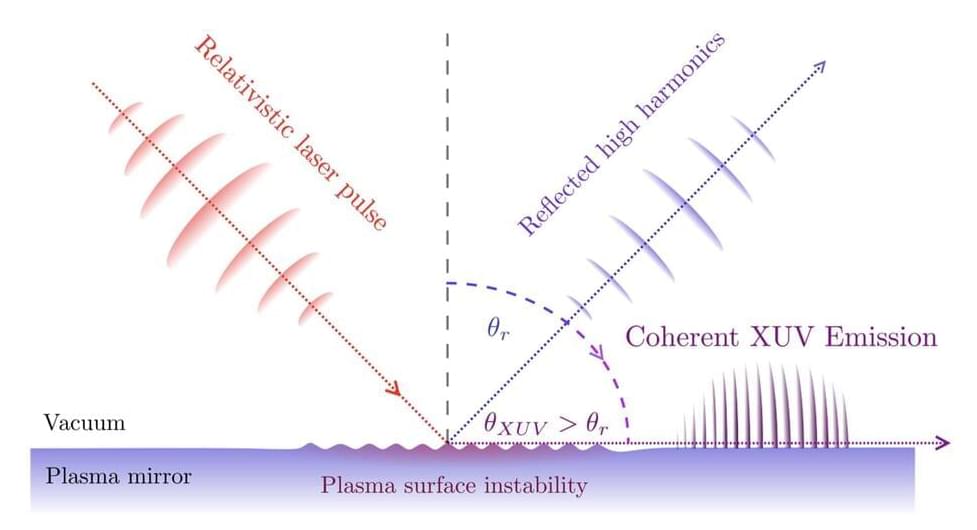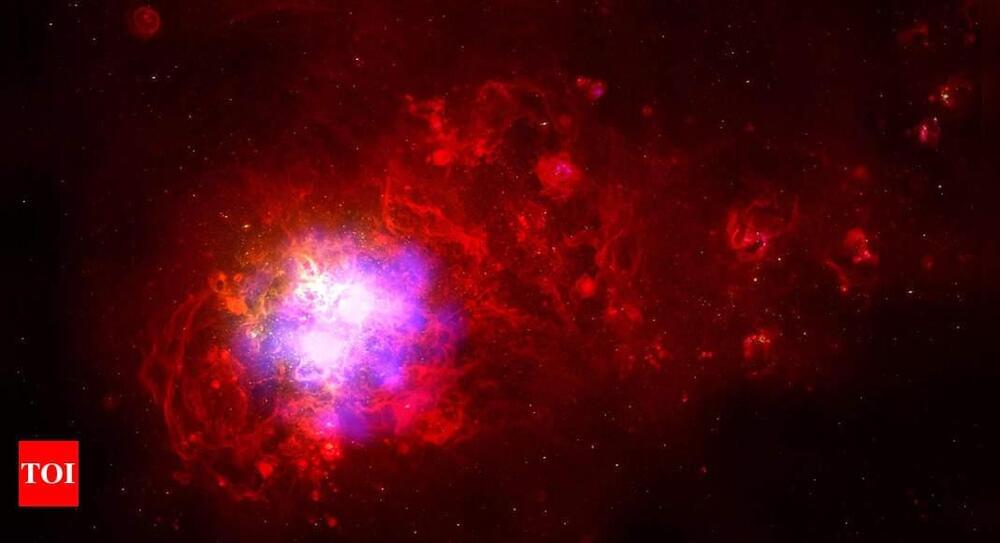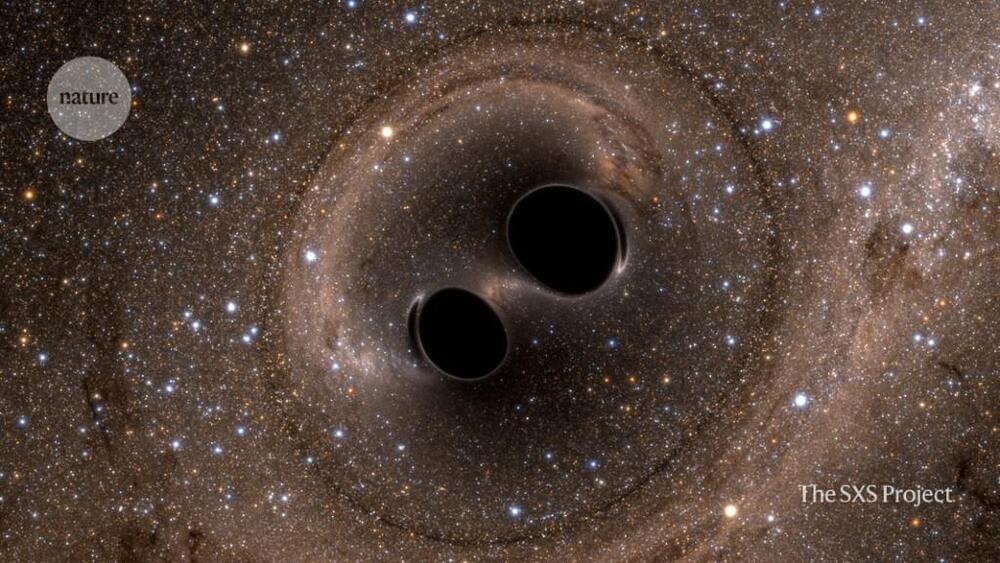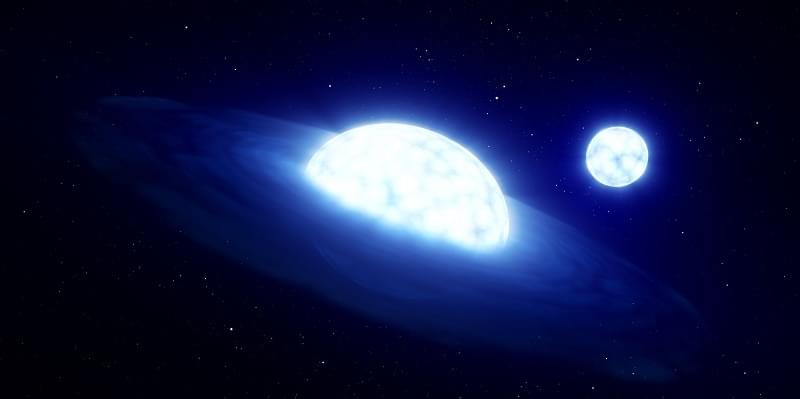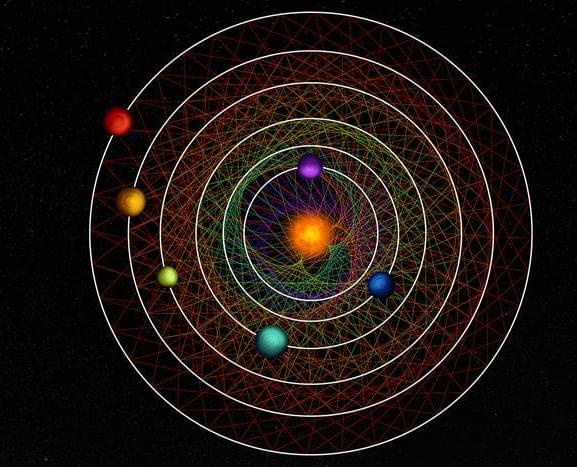Archive for the ‘physics’ category: Page 68
Dec 4, 2023
Ancient black hole challenges our understanding of the early Universe
Posted by Dan Breeden in categories: cosmology, physics
The Big Bang theory is not threatened, but astrophysicists need to explain why these supermassive black holes exist.
Dec 4, 2023
Unlocking the Secrets of Planet Formation: First Observations with the James Webb Space Telescope
Posted by Laurence Tognetti, Labroots Inc. in categories: alien life, evolution, physics
Can planets form under extreme conditions, such as high levels of ultraviolet radiation? This is something a recent study published in The Astrophysical Journal Letters hopes to find out as a team of international researchers used data obtained from NASA’s James Webb Space Telescope (JWST) as part of the eXtreme Ultraviolet Environments (XUE) JWST program to study the formation and evolution of young planetary systems. This particular study, known as XUE 1, focuses on the star cluster Pismis 24, with the team identifying some key ingredients for life as we know it.
Artist rendition of a protoplanetary disk where planets are forming around a young star. (Credit: ESO/L. Calçada)
“We find that the inner disk around XUE 1 is remarkably similar to those in nearby star-forming regions,” said Dr. Rens Waters, who is a professor of astrophysics at Radboud University in the Netherlands and a co-author on the study. “We’ve detected water and other molecules like carbon monoxide, carbon dioxide, hydrogen cyanide, and acetylene. However, the emission found was weaker than some models predicted. This might imply a small outer disk radius.”
Dec 4, 2023
New research links world record holding material to hydrogen generation
Posted by Gemechu Taye in categories: nanotechnology, physics, solar power, sustainability
With a hydrogen production rate of 139 millimoles per hour and per gram of catalyst, the material holds the world record for green hydrogen production with sunlight.
Scharfsinn86/iStock.
Professor Emiliano Cortés, a leading figure in experimental physics and energy conversion at LMU, and Dr. Matías Herrán, a postdoc researcher at the Fritz Haber Institute of the Max Planck Society, delved into the intricate world of nanotechnology to develop high-performance nanostructures that could revolutionize solar energy utilization.
Continue reading “New research links world record holding material to hydrogen generation” »
Dec 3, 2023
An anomalous relativistic emission arising from the intense interaction of lasers with plasma mirrors
Posted by Saúl Morales Rodriguéz in category: physics
Interactions between intense laser pulses and plasma mirrors have been the focus of several recent physics studies due to the interesting effects they produce. Experiments have revealed that these interactions can generate a non-linear physical process known as high-order harmonics, characterized by the emission of extreme ultraviolet radiation (XUV) and brief flashes of laser light (i.e., attosecond pulses).
Researchers at The Extreme Light Infrastructure ERIC in Czechia and Osaka University in Japan recently uncovered a surprising transition that takes place during interactions between intense laser pulses and plasma mirrors. This transition, marked by an anomalous emission of coherent XUV radiation, was outlined in a paper published in Physical Review Letters.
“Relativistic oscillating mirrors are a fascinating concept with great potential for intense attosecond pulse and bright XUV generation,” Marcel Lamač, one of the researchers who carried out the study, told Phys.org.
Dec 2, 2023
NASA’s Fermi mission rewrites astrophysics with discovery of 294 gamma-ray pulsars
Posted by Genevieve Klien in categories: physics, space
Published on Monday, Nov. 27, in The Astrophysical Journal Supplement, the catalog serves as a collaborative effort involving 170 scientists globally.
Dec 2, 2023
Gravitational waves from mega black-hole collision reveal long-sought ‘ringing’
Posted by Cecile G. Tamura in category: physics
In a groundbreaking discovery, researchers have identified evidence of long-sought vibrations resulting from the largest black-hole merger ever detected.
Researchers find massive merger’s signature aftershocks hidden in 2019 data from LIGO and Virgo detectors.
Dec 2, 2023
What If You Traveled Through a Black Hole?
Posted by Shubham Ghosh Roy in categories: cosmology, physics
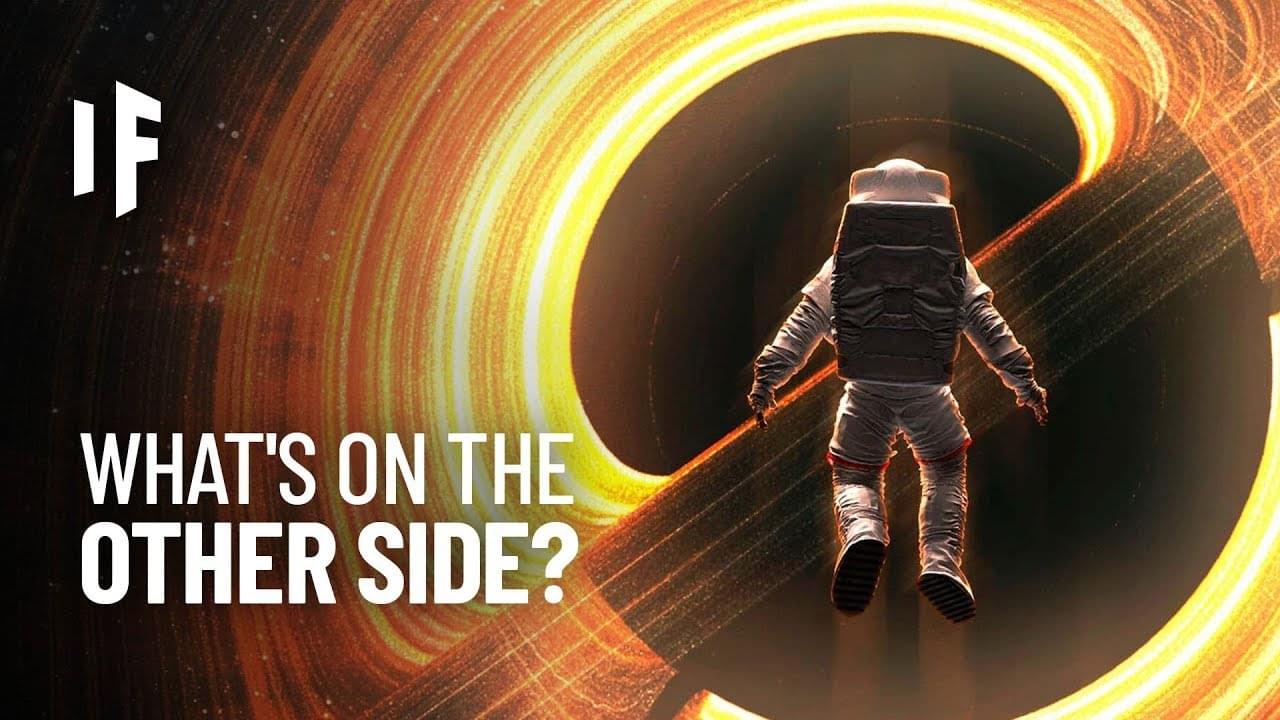
Get a free What If Top 10 book when you sign up for our newsletter: https://underknown.com/newsletter/
Dark, mysterious and consuming everything around them, black holes will rip apart anything that passes their event horizons. But could there be more? What would happen if you fell into one of those monstrosities? How could you possibly travel through the black hole itself? And if you emerged on the other side, where would you end up?
Continue reading “What If You Traveled Through a Black Hole?” »
Dec 1, 2023
‘Triple Star’ Discovery could Revolutionize Understanding of Stellar Evolution
Posted by Natalie Chan in categories: cosmology, physics
A ground-breaking new discovery by University of Leeds scientists could transform the way astronomers understand some of the biggest and most common stars in the Universe.
Research by PhD student Jonathan Dodd and Professor René Oudmaijer, from the University’s School of Physics and Astronomy, points to intriguing new evidence that massive Be stars — until now mainly thought to exist in double stars — could in fact be “triples.”
The remarkable discovery could revolutionise our understanding of the objects — a subset of B stars — which are considered an important “test bed” for developing theories on how stars evolve more generally.
Nov 30, 2023
Musical Planets: Unraveling the Orbital Waltz of HD110067
Posted by Laurence Tognetti, Labroots Inc. in categories: evolution, physics, space
A recent study published in Nature discusses the confirmation of an exoplanetary system based on data collected in 2020. The system, known as HD 110,067, possesses six planets whose orbits are in resonance with each other, or “in sync”, meaning which could offer profound insights into the formation and evolution of planetary systems throughout the cosmos. All the planets exhibit sizes between Earth and Neptune, also known as sub-Neptunes, and was conducted by an international team of researchers using data from NASA’s Transiting Exoplanet Survey Satellite (TESS) and the European Space Agency’s CHaracterising ExOPlanet Satellite (Cheops).
Artist illustration of the planets within the HD 110,067 system exhibiting orbital resonances with the colored lines depicting their resonances with each other. (Credit: CC BY-NC-SA, Thibaut Roger/NCCR PlanetS)
“This discovery is going to become a benchmark system to study how sub-Neptunes, the most common type of planets outside of the solar system, form, evolve, what are they made of, and if they possess the right conditions to support the existence of liquid water in their surfaces,” said Dr. Rafael Luque, who is a Postdoctoral Scholar in the Department of Astronomy and Astrophysics at the University of Chicago and lead author of the study.
